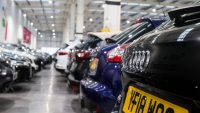- Health and safety has never been so important – and it’s only going to get more crucial as dealers reopen when lockdown ends
With the coronavirus pandemic featuring in nearly every area of discussion and media, it can be easy to think that the best plan of action as a business is to hunker down, keep things the same as always and wait for the worst to pass.
And though government has forced dealerships to close their doors and for members of the public to stay at home whenever possible, now it’s more important than ever to ensure that your health and safety as a business is up to scratch.
Some motor trade businesses may still be open during the lockdown too, so these tips from legal experts Lawgistics outline some key ways how to keep health and safety in your workplace up to scratch.
Do I still need to complete a risk assessment form for coronavirus?
Absolutely. Employers still need to be shown to take action to the threat that coronavirus poses, and that particularly at-risk employees have been identified.
Of course, the first port of call is to stay at home wherever possible, avoid contact with others and be prepared to self-isolate for the required amount of time if symptoms do develop.
However, if that isn’t possible and employees need to work ‘normally’ then a health and safety assessment needs to be carried out.
Are there key areas employers should be looking at?
It’s best to compile a guidance sheet for employees on the coronavirus, advising of key preventative measures such as the importance of good hygiene, maintaining social distancing and the proper disposal of tissues or cloths after use. Employers need to ensure that employees have quick access to facilities such as hot water, soap, hand sanitiser and bins.
Employers also need to be clear to employees that if a worker feels unwell that they should stay at home. They also need to work out a plan in the case of certain workers being unable to attend their place of business.
What about shift work?
Split shifts should be developed wherever possible to avoid too much staff overlap, and split sites could be implemented when feasible.
People under the age of 70 with an underlying health condition also need to be identified. These people qualify via a government list which states that anyone with the following conditions is considered ‘high risk’:
- Anyone instructed to get a flu jab as an adult each year on medical grounds
- Chronic (long-term) respiratory diseases, such as asthma, chronic obstructive pulmonary disease (COPD), emphysema or bronchitis
- Chronic heart disease, such as heart failure
- Chronic kidney disease
- Chronic liver disease, such as hepatitis
- Chronic neurological conditions, i.e. Parkinson’s disease, motor neurone disease, multiple sclerosis, a learning disability or cerebral palsy
- Diabetes
- Problems with your spleen – for example, sickle cell disease or if you have had your spleen removed
- A weakened immune system as the result of conditions such as HIV and AIDS, or medicines such as steroid tablets or chemotherapy
- Being seriously overweight (a body mass index (BMI) of 40 or above)
What about first aiders?
It’s likely that at this time any first aiders within a business are going to be concerned. After all, in many instances administering first aid requires close contact with another person – which isn’t adhering to current social distancing rules.
However, Lawgistics has this covered too. First-aiders are advised to wear Personal Protective Equipment (PPE), with disposable surgical gloves, a FFP3 face mask, disposable plastic apron and disposable eye protection all mandatory for people administering first aid. Users are advised to thoroughly wash their hands with hot water and soap both before and after putting on this equipment.
If a first aider needs to help someone who is injured or unwell and displays symptoms of coronavirus, these people need to be isolated from others first or kept clear from other people if physical barriers aren’t available.
What if I need to perform CPR?
When it comes to CPR and rescue breaths, then it is recommended that mouth-to-mouth is not performed.
However, if the decision is made to perform it, then a resuscitation face shield should be used if available. However, chest compressions should be the first port of call. If, however, mouth-to-mouth has been performed, then the first aider should monitor themselves for COVID-19 symptoms over the next 14 days.
As with all advice, if a first-aider has made contact with an injured or unwell person then they should immediately and thoroughly wash their hands with soap and hot water, or an alcohol-based hand sanitiser if the former isn’t available.
If blood or bodily fluid has been spilt, then a spill kit should be used using the PPE included in this too.
What about social distancing in the workplace?
In line with current government guidelines, social distancing should be observed in the workplace just as it is in public areas.
All persons are expected to maintain a two-metre distance between themselves and any other persons while at work.
Managers and supervisors will need to monitor to ensure that this distancing policy is being followed in the workplace.


































